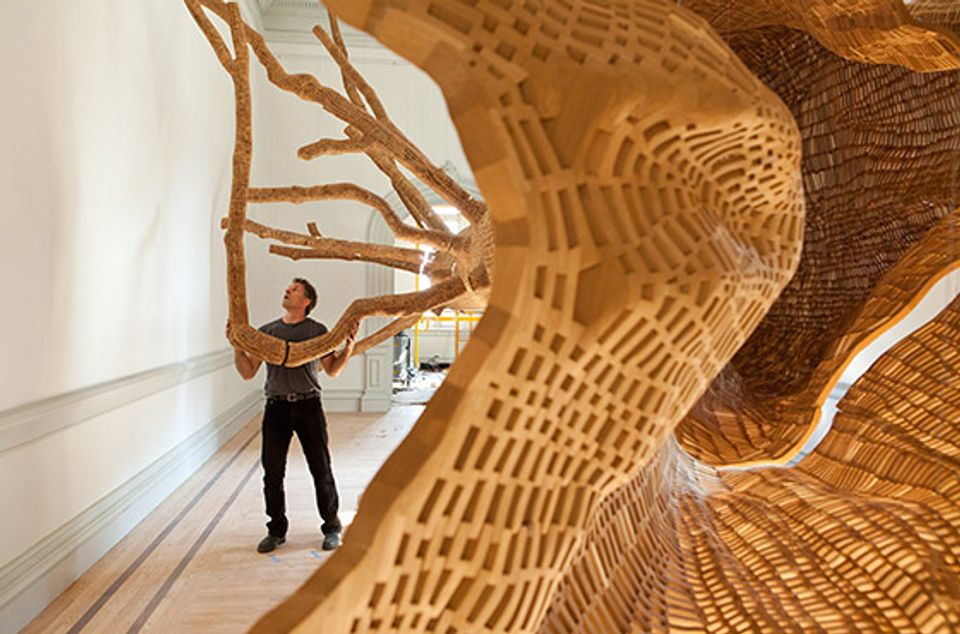

Last Sunday afternoon, Seattle-based artist John Grade spoke to an enthusiastic crowd in the Renwick's Grand Salon about his artworks/earthworks such as his monumental Middle Fork which continues to garner oohs and aahs as part of the WONDER exhibition. Grade shared how is work is inspired by nature and often returns to nature in a process of deliberate degradation: creation and destruction are two sides of his artistic vision.
Grade first spoke about Elephant Bed (2009-2010), an installation in Brighton, England that was inspired by coccolithophores, microscopic organisms whose limestone shells formed the White cliffs of Dover 200,000 years ago. (Geologists refer to this layer of calcium as the Elephant Bed.) Grade created a series of top-like twenty-four foot lightweight structures that were suspended from the ceiling--some over a pool of India ink that would gradually absorb the blue/black liquid. Others formed intimate spaces where people could be partially covered. When the exhibition was over, the Seuss-like structures were marched down narrow city streets and placed into the English Channel where they dissolved almost immediately. In this way, Grade's vision reminded me of the delicate sand mandalas created by Tibetan monks, only to be destroyed and dispersed, often in a body of water.
Grade continued to take us through more of his works, including Fold (2008), a wood and resin structure that was on view in the Bellevue Art Museum, before being placed underground in Idaho to be eaten by termites. Collector, (2006) was anchored to an oyster bed for sixteen months, while Host, (2008) an installation in the Kaibab National Forest, Arizona, was meant to be eaten by birds.
For Middle Fork Grade wondered, "What would it be like to experience the interior of a tree in a suspended way?" and found a hemlock tree in the Cascade Mountains roughly the same age as the Renwick Gallery. Intricate plaster casts were made and the tree was reproduced in salvaged cedar, often with the help of community collaborators. When Middle Fork is no longer on view at the Renwick or elsewhere, it will be returned to the forest to decompose. Like many of Grade's works, the act of creation has another side: decay, erosion, and disintegration.
Watch the webcast of Grade's talk below. Also learn more about John Grade and his work.

















